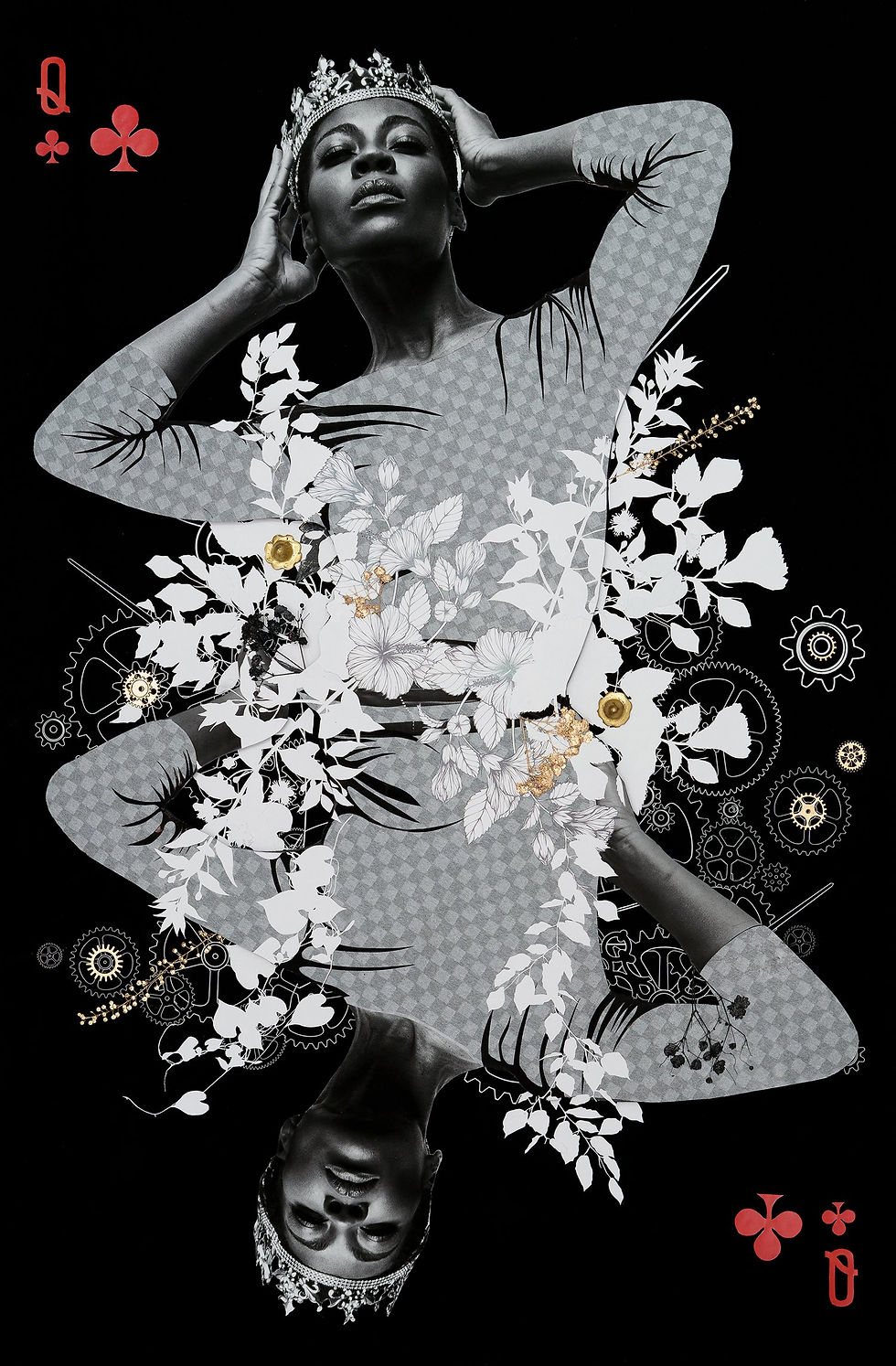Harmonies to heaven: Wassily Kandinsky
- Anthony Roberts

- Jul 24, 2022
- 4 min read

Composition VII, 1913 Wassily Kandinsky
Wassily Kandinsky (b. 1866) was an artist inspired by many sources, most profoundly music, color and the spiritual realm. He sought to approach the sublimity of musical harmony in visual form through his non-objective, abstract works. He is widely considered to be the West’s first prominent abstract artist.
Kandinsky followed a notion birthed during his law studies in Moscow to capture the fleeting qualities of emotion and spiritual transcendence through art. By combining ideas and techniques from the French and German avant garde art movements of his day with his musical passions, love of color and cultural roots, Kandinsky created a style that influenced generations to come. A citizen of Russia, Germany and France throughout his life, Kandinsky is also the star of the Guggenheim museum’s collection.
“The true work of art is born from the ‘artist’: a mysterious, enigmatic, and mystical creation. It detaches itself from him, it acquires an autonomous life, becomes a personality, an independent subject, animated with a spiritual breath, the living subject of a real existence of being.”

Kandinsky in Dresden, 1905
Image credit: Wassily Kandinsky.net
Wassily Kandinsky was born in Moscow to an upper-class family. His family moved to Odessa (now part of Ukraine), then a bustling, cosmopolitan port city with a rich cultural scene. Wassily’s father supported his artistic inclinations, encouraging drawing, piano and cello lessons. When he reached college age, Kandinsky returned to Moscow where he chose to study law, ethnography and economics. In his free time, Kandinsky visited art exhibitions and plays. Two experiences during his studies in Moscow proved to be transformational. The first was witnessing Claude Monet’s Haystack Paintings, which was his first exposure to impressionism. The second was experiencing Wagner’s opera Lohengrin, instilling a fascination with the way music elicits emotional responses and a curiosity about how to convey that emotion through visual art.

Wheatstacks (End of Summer)
Claude Monet
Following his studies, Kandinsky taught law for a few of years before deciding to change careers and become an artist. At age 30, he moved to Germany where he enrolled in art school in Munich. As an admirer and advocate of avant-garde art (particularly impressionism, fauvism and expressionism), Kandinsky pushed back against conservative views of art institutions by co-founding two associations promoting “new” art. The first was Phalanx in 1901. The second was the New Artists Association of Munich in 1909. Between 1903 and 1909, Kandinsky traveled with his girlfriend throughout Europe and North Africa painting, experiencing different cultures, and developing his style. Back in Germany in 1911, Kandinsky co-founded yet another group Der Blaue Reiter (The Blue Rider). The short lived but highly influential group quietly rebelled against contemporary, industrialized society by retreating from the city and modern life, turning to nature and folk culture. 1911 was also the year Kandinsky published his first book Concerning the Spiritual in Art, which articulated his theories on painting. By 1913, Kandinsky had begun creating his first truly non-objective works. Unfortunately, this fertile period in Kandinsky’s career was interrupted by the outbreak of WWI. Kandinsky was expelled from Germany and eventually returned to Russia. There, he briefly worked with the new communist government to develop arts organizations and schools, but he quickly grew disillusioned with the government’s utilitarian focus. In 1921, Kandinsky returned to Germany to teach at the Bauhaus school, gaining German citizenship in 1928. While in Germany, his approach began to incorporate more geometric elements. When the Nazis closed the Bauhaus school, Kandinsky moved to France where he remained for the rest of his life. During this later period, Kandinsky’s style incorporated more biomorphic forms, inspired by the surrealist movement percolating in Paris at the time. Kandinsky died in 1944 at age 77.

Image credit: David Heald
Kandinsky’s work was collected extensively by Solomon Guggenheim. The museum now holds over 150 of Kandinsky’s works in its collection, more than any other artist. Kandinsky was a key inspiration for artists of later movements, including Jackson Pollack, the abstract expressionist, Mark Rothko, the color field painter, and a countless number abstract artists working since his time.

The Blue Mountain, 1908
Kandinsky’s early works were heavily influenced by impressionists, as seen in his work The Blue Rider. The person rider is a motif used often in his early works as a symbol of transformation and transcendence. Early works were also influenced by fauves with their bold use of color as seen in The Blue Mountain. In 1913, Kandinsky created his first non-representational works, including Composition VII (featured at the top). While abstract, the work is inspired by Biblical themes of conflict and renewal and his belief that from catastrophes, a new, spiritually cleansed-world can emerge. Kandinsky’s Bauhaus period saw an emphasis on planes of color and linear, geometric qualities. Around this time, he replaced the rider motif with the circle as a universal symbol of transcendence, equilibrium and a portal to a utopian realm.
Kandinsky fashioned a classification of color shades that were ascribed emotional qualities. This color theory formed the basis of his non-representational artworks which he titled with music themes: composition, improvisation, impressions. As he composed his work, he grouped shades together to produce visual chords that would move the soul. An avid cyclist, in the years leading up to his non-representational works, Kandinsky often worked en plein air, and was part of the return to the land movement in Germany in the early 1900s, pre-WWI.
Kandinsky’s work is often sold at auction. His auction record is $42M, set at Sotheby’s in London in 2017 for Painting with White Lines. Kandinsky’s work is currently on view at the Guggenheim Museum in the museum’s iconic circular atrium.

Vignette bei 'Blatter, 1911
Woodcut, Limited Edition Print of 300
2x2in
$540

If you’d like to acquire this or other works by Wassily Kandinsky, email info@yourartmatch.com.
Watch the curator of the Guggenheim exhibition discuss Kandinsky's work:
References:



Comments